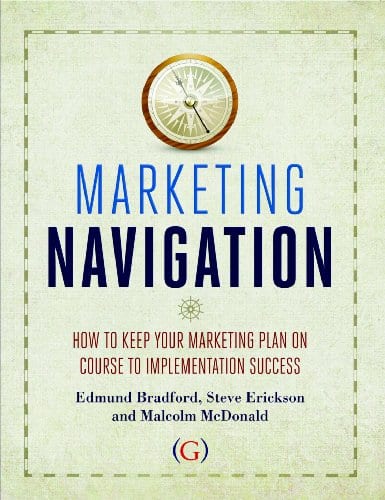A few years back, I was invited by Ed Bradford to contribute some thoughts into his book called Marketing Navigation.
The question was: “How do your Keep Plans on Track?”
When assessing the performance on one firm against the goal stated above, I would like to frame my response based upon the type of “plan” in question.
There are two types of plans in my opinion:
- A: The first one is around introducing to market a product or service that is basically” more of the same” i.e. a routine modification, extension or upgrade to an existing product or service. In this case we know the customer needs fairly well and the technology/processes required matching the needs. We had a stage gate process that support this well. It progresses ideas to commercialization through five key gates. The first two stages are really about business planning. Stage 3 is product development proper. Stage 4 is beta testing and Stage 5 is preparation for commercialization. We worked hard on this award winning process and our new product development process has been cut from two years to less than six months. Multi-functional teams look at every aspect of the issue and the team gets rewarded if they achieve their performance targets.
- B: The second area is new-new or adjacent projects. These are new markets and/or new technologies to the firm. Here, the process of implementation is by design more flexible to address uncertainty. We had basically two tracks to follow: One led by our Technology group to look at new technology introductions to market and one led by marketing to look at how to enter new markets with existing technologies. Both might converge for new/new. Our track record in both processes was pretty good. Looking backward, however, there are two important success factors:
- Success is dependent on good executive sponsorship.
- There must be a dedicated leader to run the project. By dedicated, I mean full-time, not part-time. Moreover, that leader must have passion about the product or service, must be evangelical and have some authority over the required resources. He/she must be charismatic and the right person at the helm. Unfortunately, the risk is to pick the wrong person because they are available rather than because they have the right stuff. This must be watched for and acted upon swiftly through project review processes.
Regardless of the type of project there are a few generic key success factors:
- Projects need to aim at displacing old stuff with new stuff. If we don’t “kill or prune” the old, we will never get enough room or resources to grow and will be grounded in the past.
- We also need to make the distinction between approval and commitment. By commitment, we mean that not only has the plan been signed-off but all the resources are committed and will be in the right place at the right time. When a business plan is approved, it should get the total resources it needs but this might not happen for several reasons. We need to be watchful for these pitfalls. For example: The approval is granted off budget cycle and cannot be funded without major re-shuffling all the other projects. Resources may be needed mid-year and may have to wait until the start of the next financial year.
- In any structure, decision by consensus might take a long time to get all stakeholders to commit the resources required. Executive sponsorship might be crucial there. 95% of the time, this all works fine and our regular review process take care of issues. However, 5% of the time the project requires a serious commitment across the business to get it implemented. This tends to happen on New-New projects that do not necessarily follow a standard process and need “corporate” support. Great organizations are good at getting new and disruptive ideas embraced and applied. You can see how effective Apple is in doing that.
- Key to implementation is the translation between the marketing organization and local execution. Planning may be led by the marketing function but the best implementation successes are where these plans have been diligently converted into regional plans where the product is launched when the sales teams have been trained, the customer service teams are ready…
- Another key to success is the structure of the review committees: They must be composed of senior credible executives (e.g VPs or Directors etc.) that have a say on resources allocation and acceptance of plans. This again, comes ultimately down to good leadership. Leadership by the project leader and leadership by the company.
Thanks Ed for the opportunity back then. Still very valid today. Follow the link to read more: Marketing Navigation

